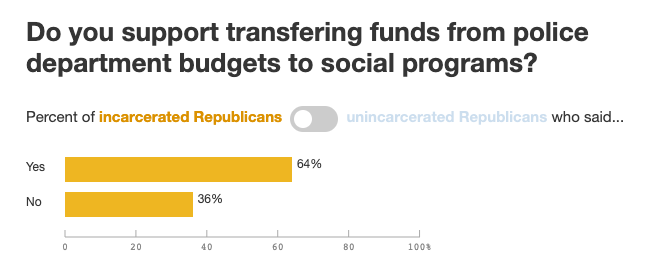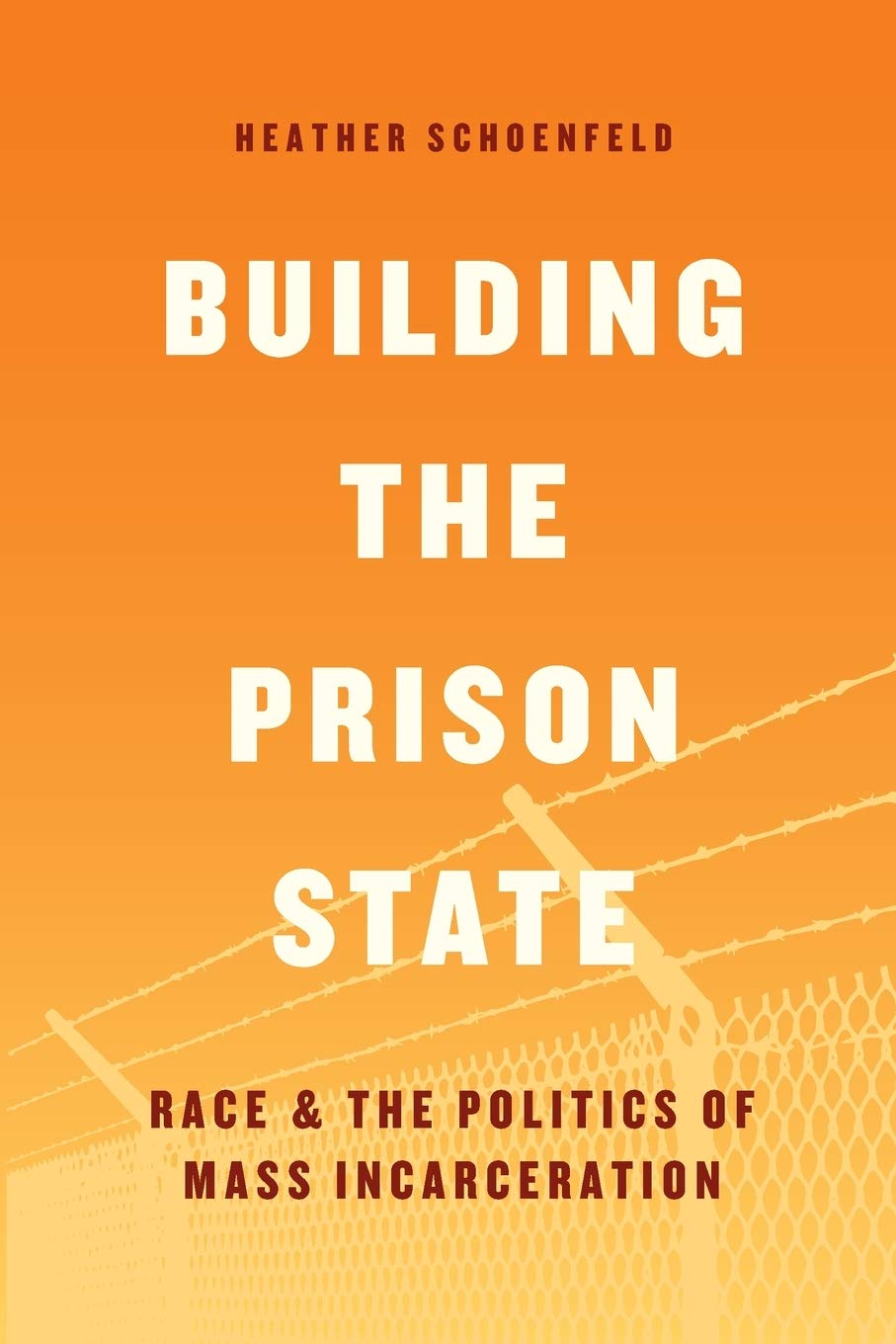Throughout the last few months, there’s something that’s been constantly gnawing at me and I haven’t had a moment to process in an organized way. I started thinking about this a lot when the AMEND report came out in June, reporting that people at San Quentin were afraid to get tested or report symptoms, lest they be placed in isolation in a death row or solitary confinement cell. And it came up again when I listened to the Assembly hearing on the PPE wearing failure and the commentary about the “physical plant” being “not conducive to compliance.” Then, I thought about it again when I read the AG’s briefs yesterday, detailing all the “reasonable” COVID-19 prevention steps they took. And finally, I felt a sense of despair and futility when I read this well-intended missive from Brendon Woods:
Unpopular view but incarcerated people should be amongst the first to get a safe vaccine. You can’t socially distance in prison or jail. Our society has failed them too many times, we should not do it again. We will be judged by how we treat our most vulnerable #CareNotCages
— Brendon Woods (@BrendonWoodsPD) November 13, 2020
My immediate, gut reaction to the idea of vaccination priority was this: If I were incarcerated in one of the places that experienced horrific outbreaks–or anywhere else in CA, really–why would I believe anyone from CDCR or CCHCS offering me a vaccine, treatment, PPE, quarantine space, transfers, or anything else, except a ticket out of the system? And why on earth would I want to cooperate with anything short of being released? The sense of futility comes from a strong core realization that the trust between the state and incarcerated people is so deeply broken that, even when reasonable steps are being proposed, they’ll be understandably doubted. The long history of being swindled and harmed, especially in the context of healthcare, is so embedded in the system’s DNA, that any prevention or treatment initiative must take into account poor buy-in.
I’m not a doctor or a public health expert, but it seems obvious to me that, when designing a public health response, one important consideration is public buy-in. As this paper explains, effective COVID-19 prevention measures depend, in big part, on an enormous amount of groundwork to foster compliance, including virtual community building, fostering solidarity between high-risk and low-risk groups, and trust building between decision-makers, healthcare workers, and the public. What we’ve seen in the U.S. on the national level is instructive of what happens when the government not only fails to make this effort, but actively stokes the opposite sentiments. I suspect that even a reasonable administration would have had trouble containing the virus in such a big country with deep pockets of ignorance and misinformation, but given the Trumpian legacy of actively creating misinformation and division, this is going to be a huge challenge for whoever runs the COVID-19 response for the Biden administration.
What we’re seeing in CDCR facilities is a crystallized example of this problem. Efforts to implement pandemic prevention methods have to contend with deep mistrust of prison authorities in general, and prison healthcare in particular, which have profoundly painful historical roots. Osagie Obasogie reminds us of the horrific history of harm and deception in prison healthcare in this piece:
As early as 1906, Dr. Richard P. Strong—director of the Biological Laboratory of the Philippine Bureau of Science who later became a professor of tropical medicine at Harvard—gave a cholera vaccine to twenty-four Filipino inmates without their consent in order to learn about the disease; thirteen died. Though this provides an early modern example of using prisoners as human subjects, it certainly was not the last. Twelve inmates from Mississippi’s Rankin Farm prison became test subjects in 1915 to study pellagra—a disfiguring and deadly disease characterized by skin rashes and diarrhea. Though common wisdom at the time suggested that pellagra was a disease caused by germs, Dr. Joseph Goldberger—a physician in the federal government’s Hygienic Laboratory, predecessor to the National Institutes of Health—thought it was linked to malnutrition characteristic of Southern rural poverty. After Mississippi Governor Earl Brewer promised pardons to all participants—an inducement to participate in research that would be intolerable today–Goldberger tried to prove his theory that poor diet caused pellagra by subjecting inmates to what many called a “hellish experiment”: eating exclusively high-starch foods such as “corn bread, mush, collards, sweet potatoes, grits and rice” that caused considerable pain, lethargy, and dizziness. Despite their pleadings to end the study, prisoners were not allowed to withdraw. And, in an early 1920s experiment that was as bizarre as it was gratuitous, 500 inmates at California’s San Quentin prison had testicular glands from rams, boars, and goats implanted into their scrotums to see if their lost sexual potency could be rejuvenated.
But one needn’t go that far back. Nonconsensual sterilization of incarcerated women was still going on as of 2013, when the practice was exposed and excoriated. The Guardian’s Shilpa Jindia explains:
Despite federal and state law prohibiting the use of federal funds for sterilization as a means of birth control in prisons, California used state funds to pay doctors a total of almost $150,000 to sterilize women. That amount paled in comparison to “what you save in welfare”, one doctor told the news outlet.
Against this backdrop, you would expect public health experts at CDCR to bend over backwards to build trust, so as to engender cooperation. Instead, they’ve done exactly the opposite. The most obvious problem, of course, has been the botched transfer from CIM. I can finally put my finger on what seemed so disingenuous in the AG’s brief from yesterday: “[P]etitioners’ attempts to suggest prisoner transfers of any kind are not safe or effective is not well taken.” The irony of taking offense at people’s understandable mistrust after this colossal fiasco is completely lost on them, which I find breathtakingly obtuse.
But the transfer issue is just one of many. Why would prisoners comply with PPE-wearing requirements when they see guards, frequently and openly, flouting these requirements with no consequences? Why would people rush to report symptoms and get tested when the consequence is that they’ll be put in places which they’ve associated, for decades, with punishment and deprivation? Most importantly, given the history of using prisoners as experiment subjects, how could CDCR and CCHCS possibly lay some trust groundwork when rolling out a vaccine, so that people don’t suspect them, understandably, of subjecting them to untested, unreliable treatments?
This is the real crux of the problem. It’s not that “the physical plant is not conducive to compliance.” It’s that the atmosphere of neglect, indifference, and cruelty, and the resulting deep mistrust, does not engender compliance, and at every turn in this situation, prison authorities have moved the compliance needle further out of whack. This problem is a big part of why the only way out is to release people. Whatever other preventative steps the authorities are taking, regardless of their objective usefulness, need to actually be adopted by people on the ground to succeed. Hanging informational posters and handing out masks might work with some fantasy environment in mind, but it doesn’t work with the institutions and people we actually have. And it doesn’t seem like the AG’s office, or CDCR officials, have even begun to comprehend the depth of this problem.














